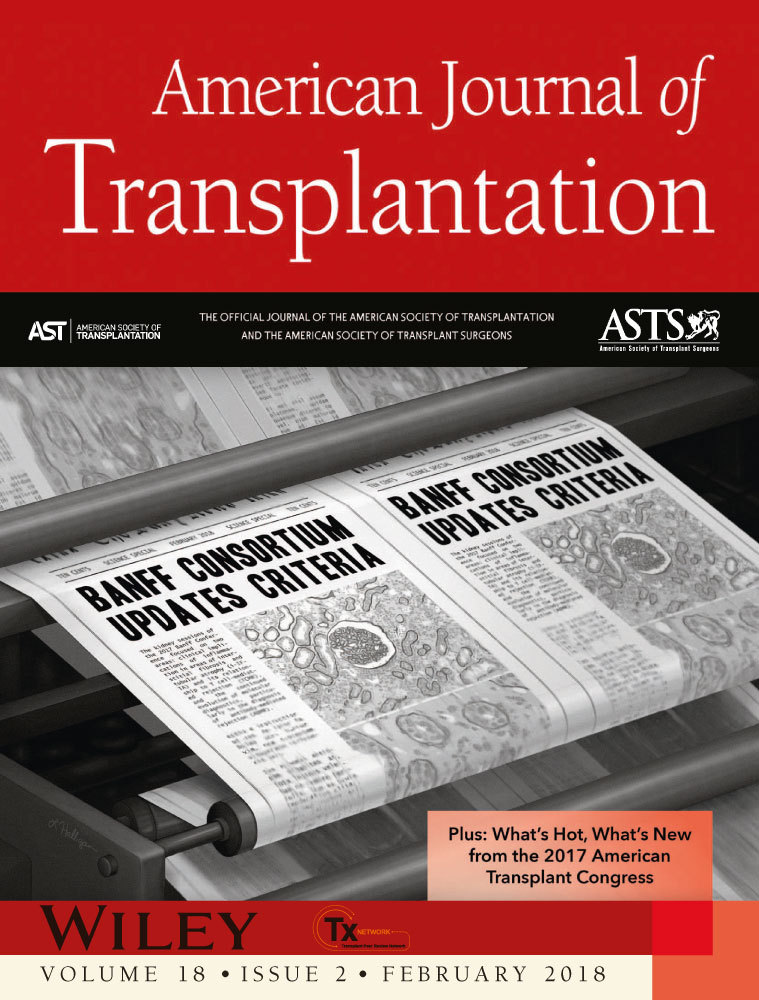Predicted indirectly recognizable HLA epitopes (PIRCHE): Only the tip of the iceberg?
See also: Lachmann et al.
To the Editor:
We read with great interest the article by Lachmann et al. regarding the value of the Predicted Indirectly Recognizable HLA Epitope (PIRCHE-II) score for the prediction of de novo donor-specific antibody (dnDSA) development.1 It follows other publications from E. Spierings’ team tackling the difficult task of identifying which donor-derived HLA allopeptides are presented by recipients’ antigen-presenting cells through class II HLA molecules.2 This is of outstanding importance for alloreactive B lymphocytes, as this step precedes the interaction with alloreactive CD4+ T lymphocytes in charge of completing the B lymphocyte activation process down to dnDSA production.
The PIRCHE-II score was suggested to independently predict dnDSA development.1 However, the authors underlined that further validation of their results is warranted because several study limitations, such as the study setting, the extrapolation of HLA typing, and HLA-DRB3/4/5, -DQA/DQB, and -DPA/DPB, were not taken into account. Strikingly, while a PIRCHE-II score ≥9 was statistically associated with dnDSA development, a lower score was not synonymous with freedom from dnDSAs.1 Moreover, the highest scores were not systematically associated with dnDSA development. Therefore, the numerous false-positive and -negative situations strongly limit the use of this tool in organ allocation programs, and we believe that other causes in addition to the limitations mentioned by the authors could explain these mixed findings.
Indeed, the current PIRCHE algorithm may only consider a limited fraction of the allopeptide pool prone to triggering dnDSA production. First, allopeptides derived from the donor HLA-DQA1, -DPB1, and -DPA1 molecules are not included in the algorithm. Second, spliced peptides could also significantly increase the peptide pool, as class II HLA can present the kind of peptides 3 that were identified at a high frequency in the class I immunopeptidome.4 Finally, donor HLA-specific B lymphocytes could internalize minor histocompatibility antigens at the same time as their target antigen. Such donor non-HLA molecules could be presented through recipient class II HLA and induce CD4+ T lymphocyte help, independently of the capacity to present the peptides derived from donor HLA.
Conversely, the current PIRCHE algorithm may also include irrelevant peptides. As donor HLA molecules are degraded into peptides before being presented, their cleavage pattern by lysosomal proteases should be taken into account to determine whether the predicted allopeptides are actually produced.5 Moreover, the algorithm determines the mismatched donor-derived peptides coming from HLA molecules as those being different from the peptides issued from the recipient's own HLA. It should additionally eliminate the allopeptides shared with monomorphic non-HLA molecules, as their specific T-lymphocyte clones would have been deleted during the thymic negative selection process.
In conclusion, the road through the ice floe down to perfect HLA matching follows the epitope track. However, because of the subtleties of T cell antigen presentation and recognition, this field is tremendously complex. The PIRCHE tool is a promising icebreaker, which will benefit from future improvements to go straight to clinical application.
DISCLOSURE
The authors of this manuscript have no conflicts of interest to disclose as described by the American Journal of Transplantation.




